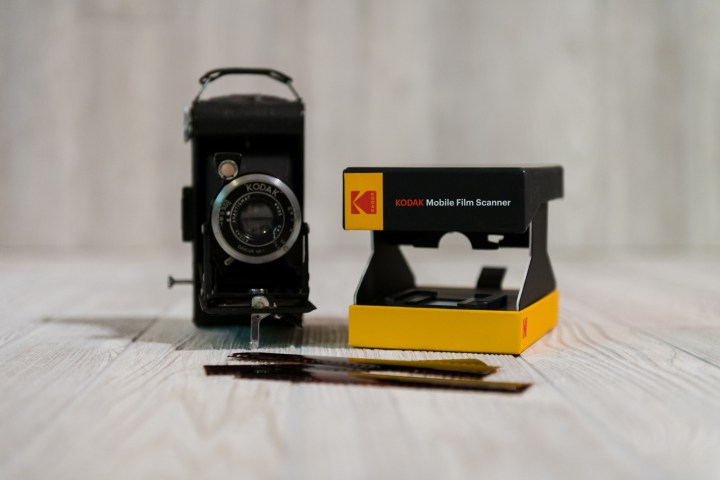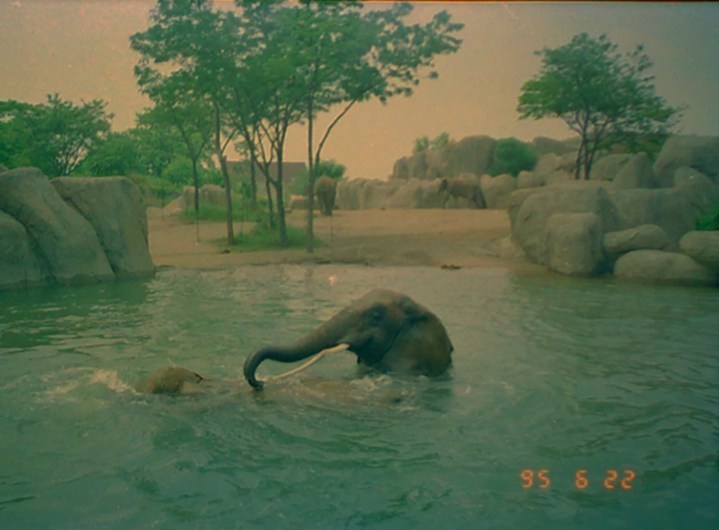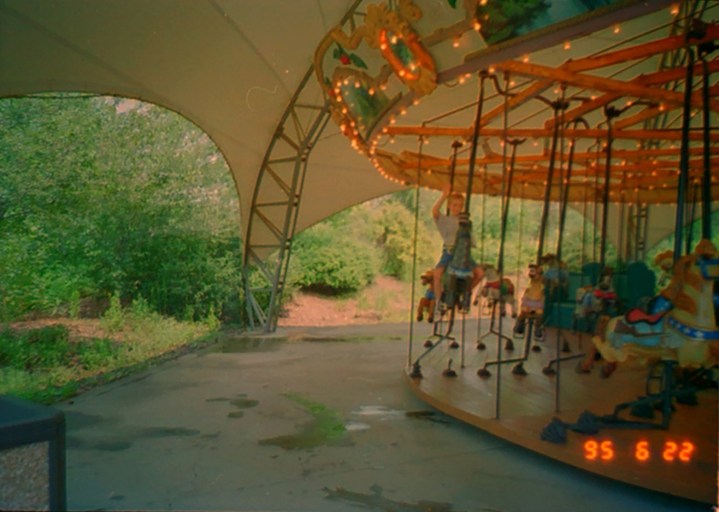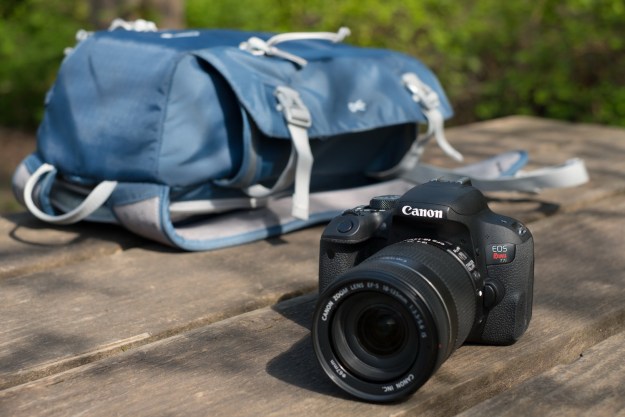
Converting film to digital typically involves either investing a few hundred dollars into a film scanner or potentially spending even more money having it scanned at a photo lab. But what if you could just use the camera that’s already in your pocket, some cardboard, and a mini LED light? That’s the idea behind the Kodak Mobile Film Scanner, a film scanner that retails for around $40 thanks to a cheap cardboard construction and — outside the AA-powered LED — no fancy technology inside.
The Kodak Mobile Film Scanner is to film digitizing what Google Cardboard is to virtual reality. Rather than provide its own scanning bed, it relies on the smartphone you already own and a mobile app that lets you scan both 35mm negatives and slide positives.
Just as Google Cardboard won’t cut it for serious virtual reality enthusiasts, the Mobile Film Scanner isn’t designed for modern day film photographers still using the medium for fine art. However, the $40 price tag and five minute set-up may be just right for doing something with those boxes of old family memories in the attic.
Using the Kodak Mobile Film Scanner

The Kodak Mobile Film Scanner is built right into the box that stores the scanner itself when not in use. The bottom half of the box houses the light table portion of the scanner, while the top is where you’ll place your phone. Although made of cardboard, it is strong enough to securely hold a phone without issue.
Getting started with the scanner took about five minutes. The top section unfolds with legs that tuck into the bottom half. The smartphone then sits on the top, with the camera positioned over a small hole designed to help align the camera over the light. Because it’s designed to work with multiple cameras, you’ll need to be careful to place your phone perfectly to keep the scans centered and straight. The top of the scanner is just a flat surface and there’s nothing to keep the phone perfectly aligned.
In the Kodak Mobile Film Scanner app (iOS or Android), simply select the type of film you’re scanning (color negative, color positive, or black-and-white negative) and the app will do the rest, automatically turning a negative into a positive image.
The film strip slides into a slot positioned directly on top of the LED backlight. Using an old-fashioned manual feed — i.e., your fingers — you push or pull the film strip until the image is aligned on the preview displayed by the smartphone screen. Tapping the screen focuses the
Once the film is in place, press the camera button in the app to snap a photo of, or “scan,” the film. From there, the app goes right into a suite of editing tools, including cropping and adjusting the orientation (horizontal shots will need to be rotated). The app also includes filters, exposure, saturation, sharpness, warmth and a handful of other editing tools. Once finished, tapping on the green check mark automatically saves the photo and takes you to a screen where you can share it or begin a new scan.
The good

Designed as a tool for non-professional photographers, the Kodak Mobile Film Scanner is very easy to use. Set-up was quick, the instructions simple. I was scanning and sharing in a matter of minutes. Take a few seconds to make sure you don’t load the film upside down and to tap the screen to focus before scanning. Otherwise, scans are hard to mess up.
Built-in editing and sharing tools mean you can share on Instagram, save to the cloud, or send via text message without having to open other apps first.
While the scanner takes a photo of another photo — which rarely results in optimal quality — the simple design made it easy to recover memories that might be otherwise hard to view. Just try looking at a negative and determining what, exactly, is in that image.
The bad

While fast to set up, if you have several dozen rolls of film to scan, the Mobile Film Scanner likely isn’t the fastest tool to get the job done. Few factors in the process are automatic. High-end scanners have either an automatic film feeder or a film holder than can hold and scan multiple frames at once. Each time you scan a photo with the Mobile Film Scanner, you have to manually move the film strip to the next frame. Outside of automatically converting a negative to a positive and automatically saving to the camera roll, most of the process is manual.
The app also doesn’t have the smart shortcuts found in other apps, such as Adobe Scan. The app doesn’t automatically detect the boundaries of the image to auto crop, so cropping must be done manually. While you can zoom prior to scanning to crop, the preview is actually narrower than the actual scan, which leaves some edges in the final image that still need to be cropped.
While the scanner holds the smartphone in place to avoid being too close to focus, a 35mm film frame is still too small to fill the frame. Images have to be cropped or digitally zoomed, which means capturing a lower resolution than what the
That resolution is good enough for sharing old family photos on social media or printing a 4 x 6, but won’t offer the quality demanded by film enthusiasts. The lower resolution leaves images lacking sharpness and can introduce noise. Just take a look at these pictures of me in the 90s (be nice, I was six and besides the fact that it was 90s, my mom probably picked my clothes):
Each time you tap on the screen to focus the shot, the colors also adjust based on what the camera sees. That may help to get better results for each individual picture, but can lead to a lack of consistency when scanning multiple photos from the same roll. Sometimes, I scanned the same photo and got two different results in the overall colors of the image.
Good enough for the ‘gram, but that’s it
While the images from the Kodak Mobile Film Scanner aren’t going to win any contests — or be blown up beyond a 4 x 6 — if all you want to do is get those old family photos out of the attic and onto social media or perhaps a digital picture frame, the scanner gets the job done. It is easy to use and inexpensive, making it ideal for those one-time projects or to quickly upload an old photo to embarrass your sibling, but I wouldn’t recommend it for people still actively shooting film. A flatbed scanner (or a photo lab) will deliver much better results and save you time for larger jobs.
Editors' Recommendations
- How to take a 3D photo from almost any smartphone
- How to print Instagram photos, from mobile printers to online photo labs
- Kodak wants to get you (almost) everything for smartphone photos with a $70 kit








